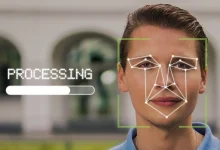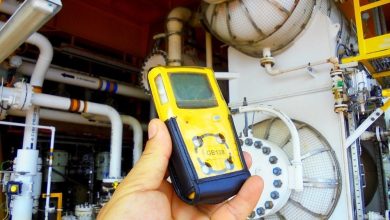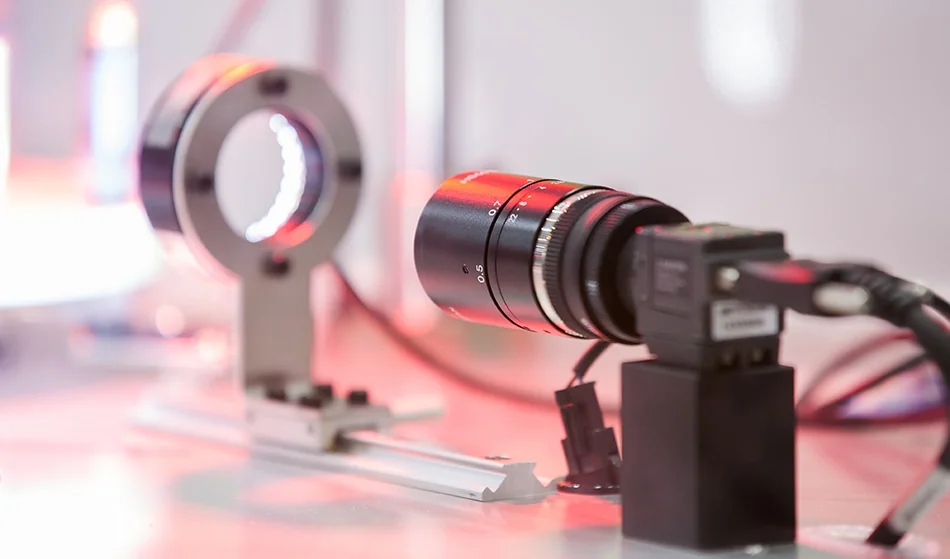Types of Proximity Sensors:
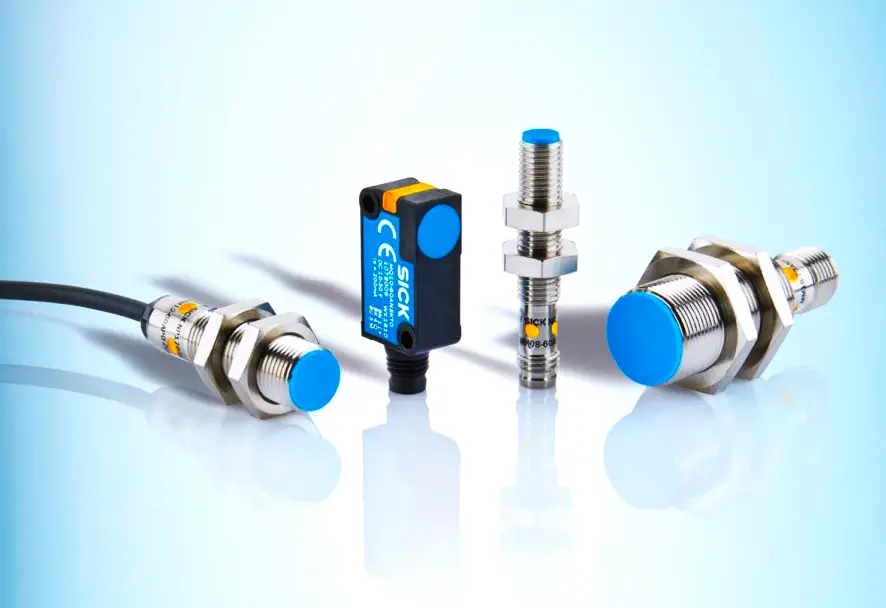
- Proximity Sensors:
Proximity sensors detect the presence or absence of objects in close proximity to the robot’s body or end effector. Common types of proximity sensors include ultrasonic sensors, infrared sensors, capacitive sensors, and inductive sensors. These sensors enable robots to detect obstacles, perform object detection, and implement collision avoidance strategies in various environments.

Proximity Sensors: Navigating Robotics with Precision
In the intricate landscape of robotics, where interaction with the environment is paramount, proximity sensors serve as indispensable components, providing robots with the ability to detect the presence or absence of objects in their surroundings. Acting as the virtual hands and eyes of robots, proximity sensors enable them to navigate through complex environments, detect obstacles, and interact with objects with precision and accuracy. Join us on a comprehensive exploration of proximity sensors, uncovering their types, functionalities, and transformative role in shaping the modern era of robotics.
Types of Proximity Sensors:
- Ultrasonic Sensors:
Ultrasonic sensors emit high-frequency sound waves and measure the time it takes for the waves to bounce back after hitting objects in the environment. By analyzing the time delay, ultrasonic sensors can determine the distance to objects and detect their presence within a certain range. Ultrasonic sensors are commonly used for object detection, collision avoidance, and distance measurement in robotics applications.
Ultrasonic Sensors in Robotics: Navigating with Sound
In the intricate realm of robotics, where perception of the environment is paramount for navigation and interaction, ultrasonic sensors stand as indispensable components. These sensors, harnessing the power of sound waves, enable robots to perceive their surroundings, detect obstacles, and navigate through complex environments with precision and accuracy. Join us on an in-depth exploration of ultrasonic sensors, uncovering their types, functionalities, and transformative role in shaping the landscape of modern robotics.

Types of Ultrasonic Sensors:
Transmitter-Receiver Ultrasonic Sensors:
These sensors consist of separate transmitter and receiver units. The transmitter emits ultrasonic waves, which bounce off objects in the environment and are then detected by the receiver. By measuring the time taken for the waves to return, these sensors can determine the distance to objects.
Reflective Ultrasonic Sensors:
Reflective ultrasonic sensors integrate both the transmitter and receiver in a single unit. The sensor emits ultrasonic waves, which reflect off objects and return to the same unit. By analyzing the time delay and intensity of the reflected waves, these sensors can detect the presence and proximity of objects.
Ultrasonic Array Sensors:
Ultrasonic array sensors utilize multiple transducers arranged in an array configuration. These sensors emit ultrasonic waves in different directions and receive reflections from multiple angles. By processing the reflections from multiple transducers, these sensors can generate detailed spatial maps of the environment.
Functionalities of Ultrasonic Sensors:
- Distance Measurement:
Ultrasonic sensors excel at measuring distances to objects in the environment. By emitting ultrasonic waves and measuring the time taken for the waves to bounce off objects and return, these sensors can accurately determine the distance to obstacles. Distance measurement capabilities enable robots to navigate through cluttered environments, avoid collisions, and maintain safe distances from obstacles.
- Obstacle Detection and Avoidance:
Ultrasonic sensors enable robots to detect obstacles in their path and navigate around them to avoid collisions. By continuously monitoring the environment for reflections of ultrasonic waves, these sensors can detect the presence and proximity of objects. Obstacle detection and avoidance functionalities are essential for autonomous robots operating in dynamic environments, such as mobile robots, drones, and autonomous vehicles.
- Navigation and Localization:
Ultrasonic sensors play a crucial role in robot navigation and localization, enabling them to determine their position and orientation relative to their surroundings. By measuring distances to landmarks or reference points in the environment, these sensors can localize robots and create maps of the surrounding area. Navigation and localization capabilities are essential for tasks such as indoor navigation, mapping, and exploration in robotics applications.
- Object Detection and Tracking:
Ultrasonic sensors facilitate object detection and tracking for robots, enabling them to detect and track moving objects in the environment. By continuously scanning the surroundings with ultrasonic waves, these sensors can detect changes in the position and velocity of objects. Object detection and tracking functionalities are used in applications such as surveillance, monitoring, and human-robot interaction in robotics.
- Gesture Recognition and Human-Robot Interaction:
Ultrasonic sensors enable robots to detect gestures and interact with humans in a natural and intuitive manner. By analyzing changes in the ultrasonic reflections caused by human gestures, these sensors can interpret gestures and commands. Gesture recognition and human-robot interaction functionalities enhance the usability and user experience of robots in various applications, such as assistive robotics, healthcare, and entertainment.
Significance of Ultrasonic Sensors in Robotics:
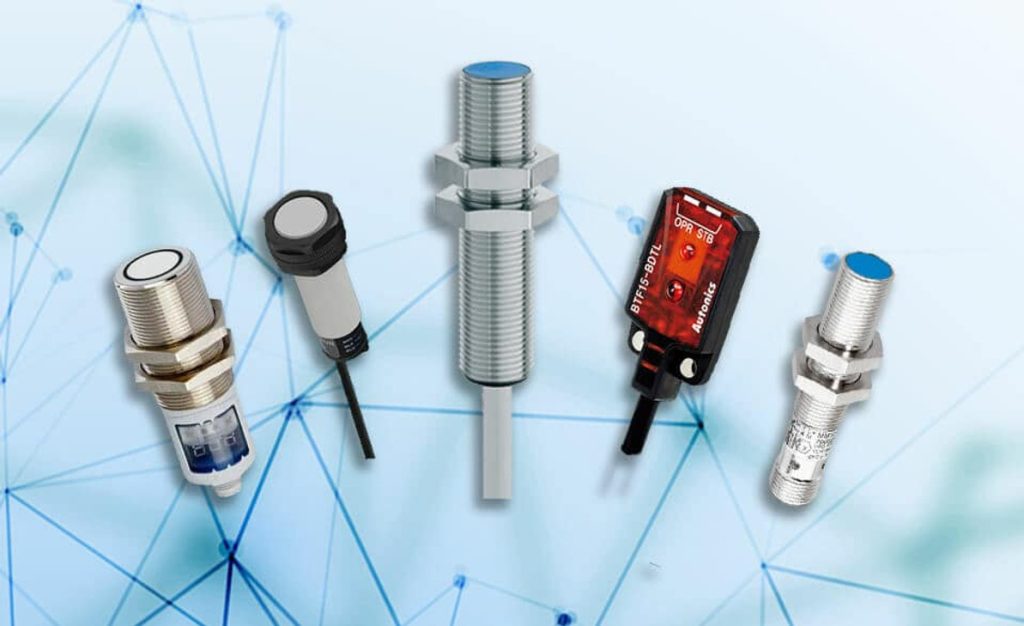
Enhanced Perception and Situational Awareness:
Ultrasonic sensors provide robots with enhanced perception and situational awareness of their surroundings, enabling them to navigate through complex environments and interact with objects and humans safely and effectively. By continuously monitoring the environment for obstacles and changes in distance, these sensors enable robots to adapt their behavior and trajectory in real-time, ensuring safe and efficient operation in diverse environments.
Autonomous Operation and Navigation:
Ultrasonic sensors enable autonomous operation and navigation for robots, allowing them to navigate through dynamic environments without human intervention. By detecting obstacles and landmarks in the environment, these sensors provide essential input for path planning, obstacle avoidance, and localization algorithms. Ultrasonic-based navigation systems enable robots to operate independently in indoor environments, such as warehouses, factories, and homes.
Flexible and Adaptive Behavior:
Ultrasonic sensors enable robots to exhibit flexible and adaptive behavior in response to changes in the environment or task requirements. By detecting changes in distance and proximity, these sensors can trigger adaptive control strategies or response actions, such as adjusting speed, changing direction, or modifying trajectory. Ultrasonic-based control systems enable robots to adapt to unforeseen circumstances, avoid collisions, and perform tasks with agility and efficiency in dynamic environments.
Human-Robot Interaction and Safety:
Ultrasonic sensors facilitate human-robot interaction and safety by enabling robots to detect the presence of humans or obstacles in their vicinity. By continuously monitoring proximity to nearby objects, these sensors ensure safe distances between robots and humans, preventing accidents or collisions. Ultrasonic-based safety systems enable robots to operate collaboratively with humans in shared workspaces, enhancing productivity and efficiency in collaborative robotics applications.
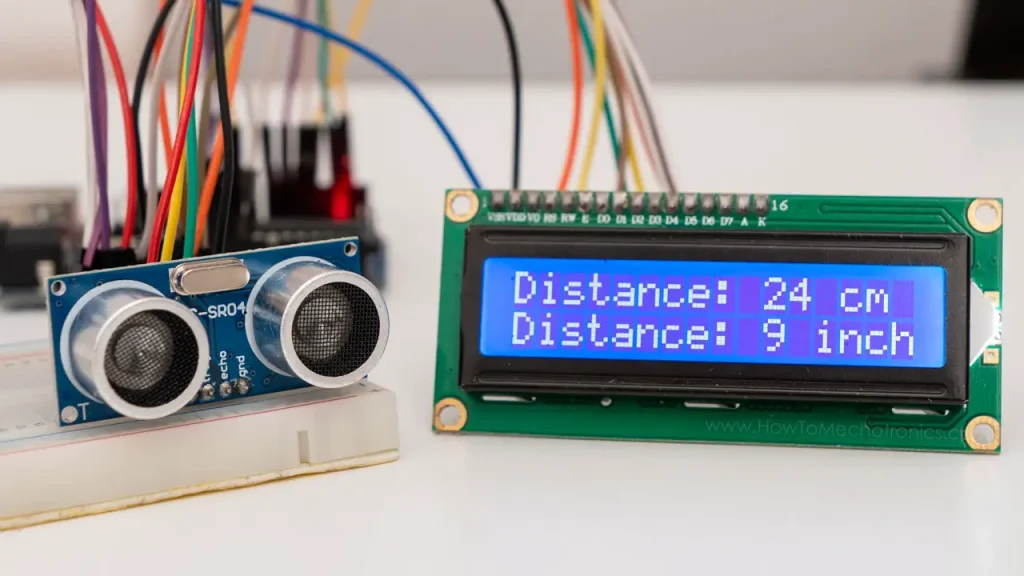
Industrial Automation and Robotics:
Ultrasonic sensors play a crucial role in industrial automation and robotics, enabling robots to perform tasks such as material handling, assembly, and inspection with precision and efficiency. By detecting the presence of parts, components, or products in manufacturing processes, these sensors ensure accurate positioning, alignment, and manipulation of objects. Ultrasonic-based automation systems enhance productivity, quality, and reliability in manufacturing, logistics, and assembly line operations.
In conclusion, ultrasonic sensors stand as essential components in the realm of robotics, providing robots with enhanced perception, navigation, and interaction capabilities essential for autonomous operation and intelligent behavior. From detecting obstacles and landmarks to facilitating collision avoidance and human-robot interaction, ultrasonic sensors enable robots to navigate through complex environments, interact with objects, and collaborate with humans with precision and accuracy. As robotics technology continues to advance and evolve, the significance of ultrasonic sensors in shaping the future of automation and intelligent robotics remains steadfast.
- Infrared Sensors:
Infrared sensors emit infrared light and measure the intensity of the reflected light to detect the presence of objects in the environment. These sensors operate based on the principle of reflection, where objects reflect infrared light differently depending on their material and surface properties. Infrared sensors are suitable for detecting objects within close proximity and are commonly used in robotics for object detection, line following, and obstacle avoidance.
Infrared Sensors in Robotics: Illuminating the Path Ahead
In the intricate world of robotics, where perception and interaction with the environment are critical, infrared sensors emerge as indispensable components, providing robots with the ability to detect and navigate through their surroundings with precision. Harnessing the power of infrared light, these sensors act as the virtual eyes of robots, enabling them to perceive objects, detect obstacles, and navigate through complex environments with accuracy and efficiency. Join us on an in-depth exploration of infrared sensors, unraveling their types, functionalities, and transformative role in shaping the landscape of modern robotics.
Types of Infrared Sensors:
- Passive Infrared (PIR) Sensors:
PIR sensors detect infrared radiation emitted by objects in their field of view. These sensors consist of pyroelectric materials that generate electric signals in response to changes in infrared radiation. PIR sensors are commonly used for motion detection and presence sensing in robotics and home automation applications.
- Active Infrared (IR) Sensors:
Active IR sensors emit infrared light and detect its reflection off objects in the environment. These sensors consist of an emitter and a receiver, with the emitter emitting infrared light and the receiver detecting the reflected light. Active IR sensors are used for proximity sensing, object detection, and obstacle avoidance in robotics applications.
- Infrared Thermometers:
Infrared thermometers measure the temperature of objects by detecting their infrared radiation. These sensors use the principles of blackbody radiation to determine the temperature of objects based on the intensity of their infrared emissions. Infrared thermometers are used in robotics for temperature monitoring, thermal imaging, and heat detection applications.
- Infrared Distance Sensors:
Infrared distance sensors measure the distance to objects based on the time-of-flight or phase shift of infrared light. These sensors emit infrared pulses and measure the time it takes for the pulses to reflect off objects and return to the sensor. Infrared distance sensors are used for distance measurement, object detection, and proximity sensing in robotics applications.
- Infrared Cameras:
Infrared cameras capture images of the environment based on infrared radiation emitted by objects. These cameras use infrared-sensitive detectors to convert infrared radiation into visible images, allowing robots to perceive the environment in low-light conditions or through obstacles. Infrared cameras are used for surveillance, inspection, and navigation in robotics applications.
Functionalities of Infrared Sensors:
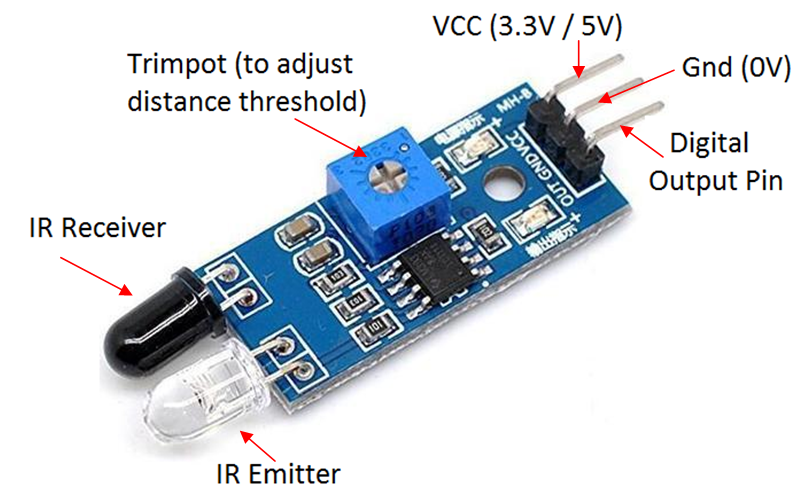
- Object Detection and Recognition:
Infrared sensors enable robots to detect and recognize objects in their surroundings based on their infrared signatures. By detecting changes in infrared radiation, sensors can identify the presence and characteristics of objects, such as size, shape, and material composition. Object detection and recognition functionalities are essential for tasks such as navigation, manipulation, and inspection in robotics applications.
- Obstacle Avoidance and Navigation:
Infrared sensors facilitate obstacle avoidance and navigation for robots, allowing them to navigate through complex environments safely and efficiently. By detecting obstacles and changes in infrared radiation, sensors provide input for navigation algorithms to plan collision-free trajectories. Obstacle avoidance and navigation functionalities enable robots to navigate through cluttered spaces, avoid collisions, and reach their destinations with precision.
- Gesture Recognition and Human-Robot Interaction:
Infrared sensors enable robots to detect and interpret human gestures and interactions based on changes in infrared radiation. By analyzing patterns of infrared emissions, sensors can recognize gestures made by users and interpret them as control inputs. Gesture recognition and human-robot interaction functionalities enhance the usability and user experience of robots in various applications, such as assistive robotics, healthcare, and entertainment.
- Temperature Monitoring and Control:
Infrared sensors enable robots to monitor and control temperatures in their surroundings by detecting infrared radiation emitted by objects. By measuring changes in infrared emissions, sensors can determine the temperature of objects and adjust control parameters accordingly. Temperature monitoring and control functionalities are used in robotics for applications such as thermal regulation, HVAC systems, and environmental monitoring.
- Security and Surveillance:
Infrared sensors play a crucial role in security and surveillance applications, enabling robots to detect and monitor intruders or suspicious activities based on changes in infrared radiation. By continuously scanning the environment for infrared signatures, sensors can detect movement, heat sources, or anomalies indicative of potential threats. Security and surveillance functionalities enhance the safety and security of facilities, assets, and personnel in various robotics applications.
Significance of Infrared Sensors in Robotics:
- Enhanced Perception and Situational Awareness:
Infrared sensors provide robots with enhanced perception and situational awareness of their surroundings, enabling them to detect objects, obstacles, and changes in the environment with precision and accuracy. By continuously monitoring infrared radiation, sensors enable robots to adapt their behavior and trajectory in real-time, ensuring safe and efficient operation in diverse environments.
- Autonomous Operation and Navigation:
Infrared sensors enable autonomous operation and navigation for robots, allowing them to navigate through dynamic environments without human intervention. By detecting obstacles and landmarks in the environment, sensors provide essential input for path planning, obstacle avoidance, and localization algorithms. Infrared-based navigation systems enable robots to operate independently in indoor and outdoor environments, such as warehouses, factories, and outdoor terrains.
- Flexible and Adaptive Behavior:
Infrared sensors enable robots to exhibit flexible and adaptive behavior in response to changes in the environment or task requirements. By detecting changes in infrared radiation and interpreting environmental cues, sensors can trigger adaptive control strategies or response actions, such as adjusting speed, changing direction, or modifying trajectory. Infrared-based control systems enable robots to adapt to unforeseen circumstances, avoid collisions, and perform tasks with agility and efficiency in dynamic environments.
- Human-Robot Interaction and Safety:
Infrared sensors facilitate human-robot interaction and safety by enabling robots to detect the presence of humans or obstacles in their vicinity. By continuously monitoring infrared radiation and proximity to nearby objects, sensors ensure safe distances between robots and humans, preventing accidents or collisions. Infrared-based safety systems enable robots to operate collaboratively with humans in shared workspaces, enhancing productivity and efficiency in collaborative robotics applications.
- Industrial Automation and Robotics:
Infrared sensors play a crucial role in industrial automation and robotics, enabling robots to perform tasks such as material handling, assembly, and inspection with precision and efficiency. By detecting the presence of parts, components, or products in manufacturing processes, sensors ensure accurate positioning, alignment, and manipulation of objects. Infrared-based automation systems enhance productivity, quality, and reliability in manufacturing, logistics, and assembly line operations.
In conclusion, infrared sensors stand as essential components in the realm of robotics, providing robots with enhanced perception, navigation, and interaction capabilities essential for autonomous operation and intelligent behavior. From detecting obstacles and landmarks to facilitating human-robot interaction and surveillance, infrared sensors enable robots to navigate through complex environments, interact with objects, and collaborate with humans with precision and accuracy. As robotics technology continues to advance and evolve, the significance of infrared sensors in shaping the future of automation and intelligent robotics remains steadfast.
- Capacitive Sensors:
Capacitive sensors detect changes in capacitance caused by the presence or absence of objects in their vicinity. These sensors generate an electric field and measure changes in capacitance when objects enter or leave the field. Capacitive sensors are sensitive to the electrical properties of materials and can detect non-metallic objects such as liquids, plastics, or human bodies. Capacitive sensors are used in robotics for proximity sensing, object detection, and touch sensing applications.
Capacitive Sensors in Robotics: Bridging the Gap Between Touch and Technology
In the intricate world of robotics, where interaction with the environment is crucial for tasks ranging from manipulation to navigation, capacitive sensors emerge as essential components. These sensors, harnessing the principles of capacitance, provide robots with the ability to perceive touch, proximity, and even the presence of non-metallic objects. Serving as the sensitive fingertips of robots, capacitive sensors enable them to navigate through complex environments, detect objects, and interact with the world around them with precision and accuracy. Let’s embark on an in-depth exploration of capacitive sensors, uncovering their types, functionalities, and transformative role in shaping the landscape of modern robotics.
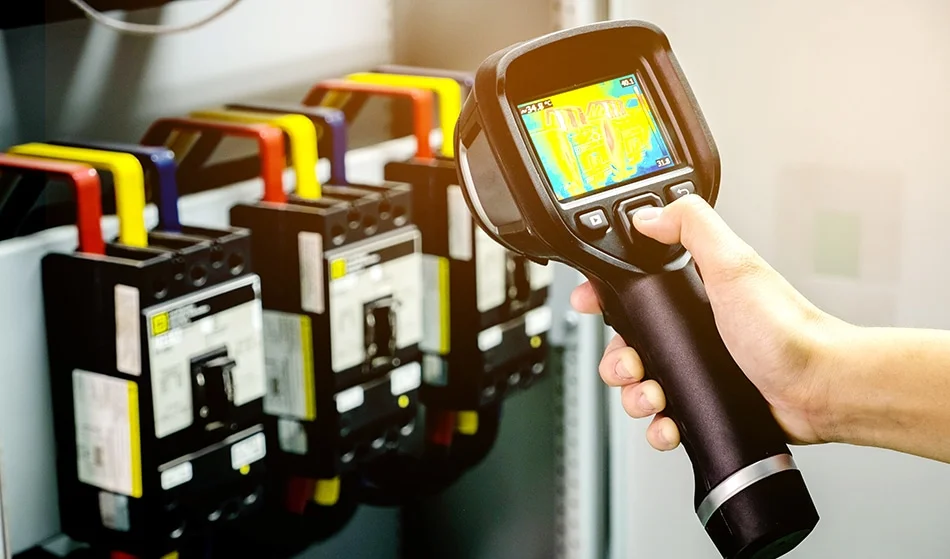
Types of Capacitive Sensors:
- Touch Sensors:
Capacitive touch sensors detect touch or proximity by measuring changes in capacitance caused by the presence of a conductive object, such as a human finger. These sensors are commonly used in human-machine interfaces, touchscreens, and interactive displays, enabling users to interact with robots using touch gestures.
- Proximity Sensor:
Capacitive proximity sensors detect the presence or absence of objects based on changes in capacitance caused by their proximity. These sensors can detect non-metallic objects such as plastics, liquids, or human bodies, making them suitable for applications requiring proximity sensing, object detection, or liquid level sensing.
- Displacement Sensors:
Capacitive displacement sensors measure changes in capacitance caused by the displacement of objects or surfaces. These sensors can detect small changes in position or movement with high precision, making them suitable for applications such as position sensing, displacement measurement, or vibration monitoring in robotics.
- Liquid Level Sensors:
Capacitive liquid level sensors detect changes in capacitance caused by the presence or absence of liquids. These sensors are commonly used in industrial and automotive applications for liquid level sensing, fluid level monitoring, or leak detection in tanks, reservoirs, or pipelines.
- Pressure Sensors:
Capacitive pressure sensors measure changes in capacitance caused by pressure or force applied to a sensing element. These sensors can detect changes in pressure with high sensitivity and accuracy, making them suitable for applications such as pressure sensing, force measurement, or tactile feedback in robotics.
Functionalities of Capacitive Sensors:
- Touch Sensing and Interaction:
Capacitive touch sensors enable robots to detect touch or proximity gestures made by users and interact with them in a natural and intuitive manner. By measuring changes in capacitance caused by touch or proximity, sensors can detect gestures such as tapping, swiping, or pinching and interpret them as control inputs. Touch sensing and interaction functionalities enhance the usability and user experience of robots in various applications, such as human-robot interaction, interactive displays, or wearable devices.
- Proximity Sensing and Object Detection:
Capacitive proximity sensors enable robots to detect the presence or absence of objects in their surroundings based on changes in capacitance caused by their proximity. By continuously monitoring changes in capacitance, sensors can detect the presence of objects such as human bodies, plastics, or liquids and trigger appropriate response actions. Proximity sensing and object detection functionalities are essential for tasks such as obstacle avoidance, navigation, or object recognition in robotics applications.
- Position Sensing and Displacement Measurement:
Capacitive displacement sensors enable robots to measure changes in position or displacement of objects or surfaces with high precision and accuracy. By detecting changes in capacitance caused by the displacement of objects, sensors can determine the position, movement, or alignment of components in robotic systems. Position sensing and displacement measurement functionalities are used in applications such as robotics assembly, manufacturing, or inspection for precise control and alignment of components.
- Liquid Level Sensing and Fluid Monitoring:
Capacitive liquid level sensors enable robots to monitor the level of liquids in tanks, reservoirs, or pipelines based on changes in capacitance caused by the presence or absence of liquids. By detecting changes in capacitance, sensors can determine the level, volume, or flow rate of liquids in industrial or automotive applications. Liquid level sensing and fluid monitoring functionalities are essential for tasks such as liquid level control, fluid level monitoring, or leak detection in robotics applications.
- Pressure Sensing and Force Measurement:
Capacitive pressure sensors enable robots to measure changes in pressure or force applied to objects or surfaces with high sensitivity and accuracy. By detecting changes in capacitance caused by pressure or force, sensors can determine the magnitude, distribution, or direction of forces in robotic systems. Pressure sensing and force measurement functionalities are used in applications such as tactile sensing, force feedback, or robotic manipulation for precise control and interaction with objects.
- Significance of Capacitive Sensors in Robotics:
- Enhanced Sensing and Perception:
Capacitive sensors provide robots with enhanced sensing and perception capabilities, enabling them to detect touch, proximity, and the presence of objects with precision and accuracy. By continuously monitoring changes in capacitance, sensors enable robots to perceive their surroundings and interact with objects in a natural and intuitive manner. Enhanced sensing and perception capabilities enhance the usability, functionality, and versatility of robots in various applications, such as human-robot interaction, object manipulation, or environmental monitoring.
- Autonomous Operation and Control:
Capacitive sensors enable robots to operate autonomously and perform tasks with precision and efficiency. By providing robots with real-time feedback on touch, proximity, or object detection, sensors enable them to adapt their behavior and trajectory in response to changes in the environment. Autonomous operation and control functionalities enable robots to navigate through complex environments, avoid obstacles, and interact with objects with agility and intelligence.
- Flexible and Adaptive Behavior:
Capacitive sensors enable robots to exhibit flexible and adaptive behavior in response to changes in the environment or task requirements. By detecting changes in capacitance and interpreting environmental cues, sensors enable robots to trigger adaptive control strategies or response actions, such as adjusting speed, changing direction, or modifying trajectory. Flexible and adaptive behavior functionalities enable robots to adapt to unforeseen circumstances, avoid collisions, and perform tasks with agility and efficiency in dynamic environments.
Capacitive sensors facilitate human-robot interaction and collaboration by enabling robots to detect touch or proximity gestures made by users and respond accordingly. By recognizing gestures and commands, sensors enable robots to interact with humans in a natural and intuitive manner, enhancing the usability and user experience of robotic systems. Human-robot interaction and collaboration functionalities enable robots to assist users, perform collaborative tasks, or operate safely in shared workspaces.
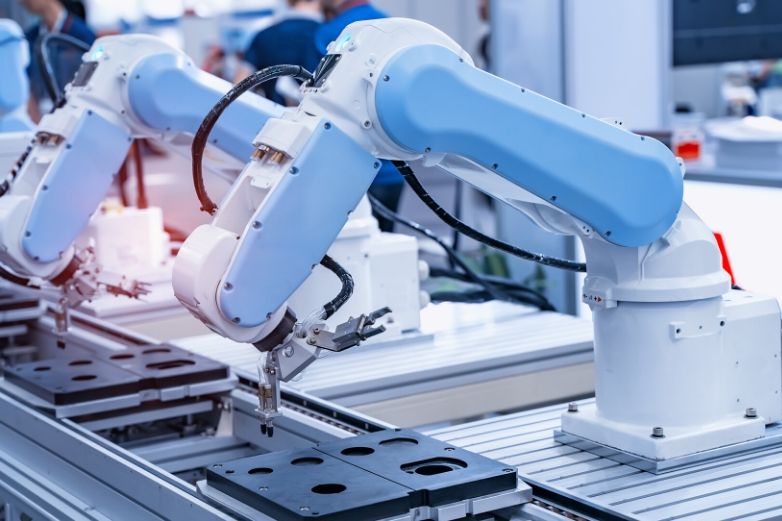
- Industrial Automation and Robotics:
Capacitive sensors play a crucial role in industrial automation and robotics, enabling robots to perform tasks such as object manipulation, assembly, or inspection with precision and efficiency. By providing real-time feedback on touch, proximity, or object detection, sensors enable robots to perform tasks accurately and reliably in manufacturing, logistics, or assembly line operations. Industrial automation and robotics functionalities enhance productivity, quality, and reliability in industrial processes, driving efficiency and competitiveness in manufacturing and production industries.
In conclusion, capacitive sensors stand as essential components in the realm of robotics, providing robots with enhanced sensing, perception, and interaction capabilities essential for autonomous operation and intelligent behavior. From detecting touch and proximity to enabling object manipulation and collaboration, capacitive sensors enable robots to navigate through complex environments, interact with objects, and collaborate with humans with precision and accuracy. As robotics technology continues to advance and evolve, the significance of capacitive sensors in shaping the future of automation and intelligent robotics remains steadfast.
- Inductive Sensors:
Inductive sensors detect the presence of metallic objects by generating electromagnetic fields and measuring changes in inductance when objects enter the field. These sensors are sensitive to the conductive properties of materials and can detect ferrous and non-ferrous metals. Inductive sensors are widely used in industrial robotics for metal detection, part identification, and conveyor belt monitoring applications.
- Laser Sensors:
Laser sensors emit laser beams and measure the time-of-flight or phase shift of the reflected light to determine the distance to objects in the environment. These sensors provide accurate distance measurements and can detect objects with high precision over long distances. Laser sensors are used in robotics for applications such as object detection, localization, and mapping in environments with varying lighting conditions or surface textures.
Functionalities of Proximity Sensors:
- Object Detection and Localization:
Proximity sensors enable robots to detect the presence or absence of objects in their surroundings and localize them within a certain range. By measuring distance or changes in proximity, sensors can identify obstacles, landmarks, or targets for navigation, manipulation, or interaction. Object detection and localization are essential for tasks such as obstacle avoidance, path planning, and pick-and-place operations in robotics applications.
- Collision Avoidance and Safety:
Proximity sensors facilitate collision avoidance and safety for robots operating in dynamic environments with obstacles or moving objects. By continuously monitoring the proximity to nearby objects, sensors can alert robots to potential collisions and trigger evasive maneuvers or braking actions to avoid accidents. Collision avoidance systems based on proximity sensors enhance the safety of robotic systems and prevent damage to equipment or personnel in industrial or mobile robotics applications.
- Positioning and Alignment:
Proximity sensors enable precise positioning and alignment of robots with respect to objects or surfaces in the environment. By detecting the proximity to reference points or target objects, sensors can guide robots to the desired position or orientation for manipulation, assembly, or inspection tasks. Positioning and alignment systems based on proximity sensors ensure accurate placement and alignment of components in manufacturing, logistics, or assembly line operations.
- Touch Sensing and Interaction:
Proximity sensors provide touch sensing capabilities for robots, allowing them to detect contact with objects or surfaces and interact with the environment. By measuring changes in proximity or capacitance, sensors can detect touch or proximity gestures made by users and interpret them as control inputs. Touch sensing and interaction systems enable robots to perform tasks such as object manipulation, human-robot collaboration, and interactive displays in various robotics applications.
- Environmental Monitoring and Control:
Proximity sensors monitor environmental conditions such as the presence of liquids, gases, or hazardous materials in the vicinity of robots. By detecting changes in proximity or capacitance, sensors can alert operators to potential hazards or abnormal conditions and trigger appropriate response actions. Environmental monitoring systems based on proximity sensors enhance safety, prevent accidents, and ensure compliance with regulations in industrial, agricultural, or hazardous environments.
Significance of Proximity Sensors in Robotics:
- Enhanced Perception and Situational Awareness:
Proximity sensors provide robots with enhanced perception and situational awareness of their surroundings, enabling them to detect obstacles, localize objects, and navigate through complex environments with precision and accuracy. By continuously monitoring proximity to nearby objects, sensors enable robots to adapt their behavior and trajectory in real-time, avoiding collisions and ensuring safe and efficient operation in diverse environments.
- Autonomous Operation and Navigation:
Proximity sensors enable autonomous operation and navigation for robots, allowing them to navigate through dynamic environments without human intervention. By detecting obstacles and landmarks in the environment, sensors provide essential input for path planning, obstacle avoidance, and localization algorithms. Proximity-based navigation systems enable robots to operate independently in complex and unpredictable environments, such as warehouses, factories, or outdoor terrain.
- Flexible and Adaptive Behavior:
Proximity sensors enable robots to exhibit flexible and adaptive behavior in response to changes in the environment or task requirements. By detecting changes in proximity, sensors can trigger adaptive control strategies or response actions, such as adjusting speed, changing direction, or modifying trajectory. Proximity-based control systems enable robots to adapt to unforeseen circumstances, avoid collisions, and perform tasks with agility and efficiency in dynamic environments.
- Human-Robot Interaction and Safety:
Proximity sensors facilitate human-robot interaction and safety by enabling robots to detect the presence of humans or obstacles in their vicinity. By continuously monitoring proximity to nearby objects, sensors ensure safe distances between robots and humans, preventing accidents or collisions. Proximity-based safety systems enable robots to operate collaboratively with humans in shared workspaces, enhancing productivity and efficiency in collaborative robotics applications.
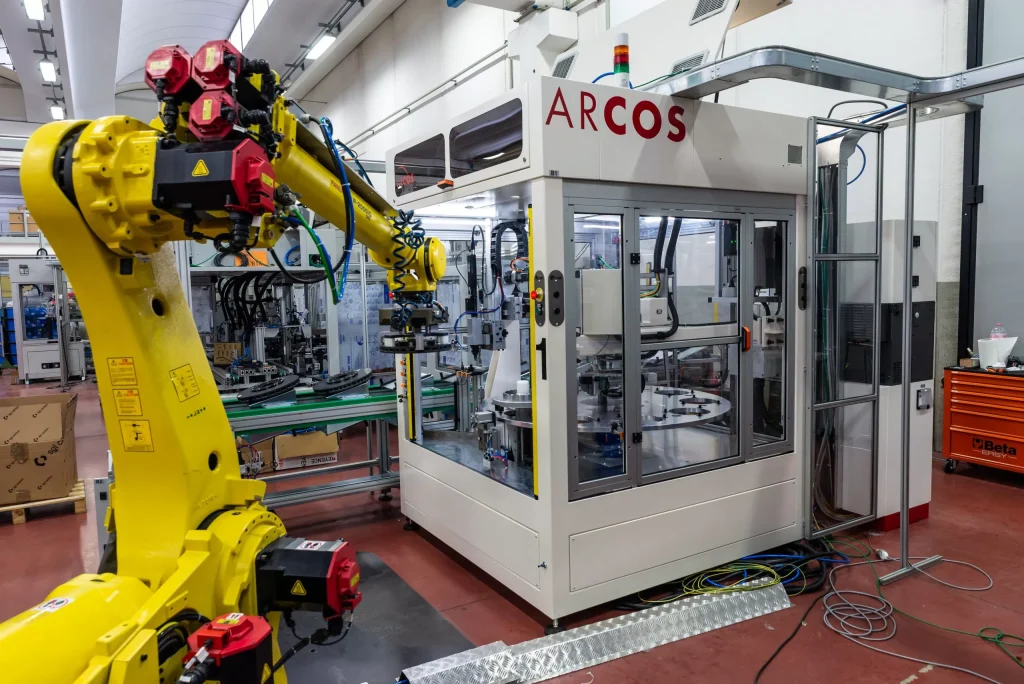
- Industrial Automation and Robotics:
Proximity sensors play a crucial role in industrial automation and robotics, enabling robots to perform tasks such as material handling, assembly, and inspection with precision and efficiency. By detecting the presence of parts, components, or products in manufacturing processes, sensors ensure accurate positioning, alignment, and manipulation of objects. Proximity-based automation systems enhance productivity, quality, and reliability in manufacturing, logistics, and assembly line operations.
In conclusion, proximity sensors stand as essential components in the realm of robotics, providing robots with enhanced perception, navigation, and interaction capabilities essential for autonomous operation and intelligent behavior. From detecting obstacles and landmarks to facilitating collision avoidance and safety, proximity sensors enable robots to navigate through complex environments, interact with objects, and collaborate with humans with precision and accuracy. As robotics technology continues to advance and evolve, the significance of proximity sensors as virtual hands and eyes of robots remains steadfast, shaping the future of automation and human-machine interaction.

